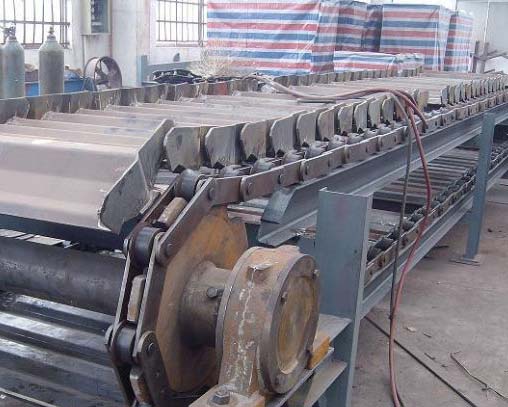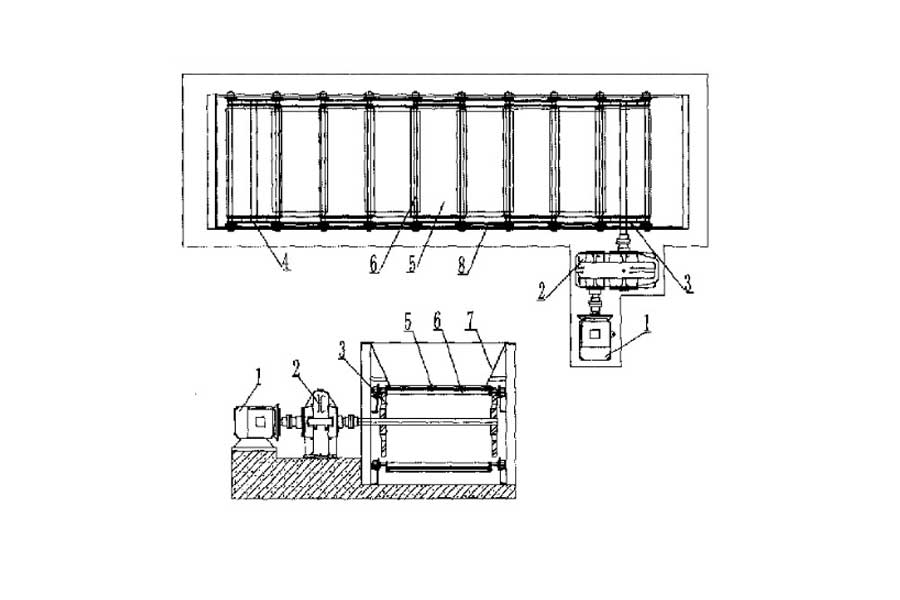Introduction: Apron feeders are robust and reliable conveyor machines used to transport bulk materials in various industries such as mining, construction, and heavy-duty processing. The design of an apron feeder plays a crucial role in its efficiency and performance. This article explores the selection principles of apron feeder design, including key factors to consider, design considerations, and best practices. By understanding these principles, engineers and professionals can make informed decisions to optimize apron feeder design for specific applications.
Tips 1#: Factors to Consider in Apron Feeder Design
- Material Characteristics: a. Bulk Density: The density of the material being transported affects the apron feeder’s load capacity and power requirements. b. Particle Size and Shape: The size and shape of the material particles determine the feeder’s pan width and the clearance required between the pans. c. Abrasiveness and Cohesiveness: Abrasive or cohesive materials may require special considerations in the design, such as hardened pans or additional cleaning devices.
- Capacity Requirements: a. Throughput: The desired material flow rate is a crucial factor in determining the apron feeder’s dimensions, speed, and power requirements. b. Surge Loads: Consideration must be given to handling intermittent or surge loads that exceed the normal flow rate to prevent equipment overload.
- Environmental Factors: a. Temperature and Humidity: Extreme temperatures or high humidity levels may require additional insulation, protective coatings, or ventilation systems. b. Corrosion and Abrasion: Environments with corrosive or abrasive elements may necessitate the use of specialized materials or coatings to ensure durability.
Tips 2#: Design Considerations
- Apron Feeder Types: a. Heavy-Duty Apron Feeder: Ideal for handling large, lumpy, and abrasive materials, featuring robust construction and high capacities. b. Light-Duty Apron Feeder: Suitable for handling smaller, non-abrasive materials with lower capacities, often used in industries like cement and power generation.
- Pan Design: a. Pan Width and Length: Determined based on the material characteristics, desired capacity, and available space. b. Pan Strength: Adequate pan strength is essential to withstand the weight of the material and any impact loads. c. Pan Shape: Various pan designs, such as flat, convex, or curved pans, can be used based on material flow requirements.
- Drive Systems: a. Chain Drive: Commonly used for heavy-duty applications, where chains with large pitch sizes and robust attachments ensure reliable operation. b. Hydraulic Drive: Offers precise control over the apron feeder’s speed and torque, suitable for applications requiring variable feed rates.

Tips 3#: Best Practices for Apron Feeder Design:
- Proper Sizing: Accurate determination of the apron feeder’s dimensions, pan width, and chain strength ensures optimal performance and reduces maintenance requirements.
- Material Flow Optimization: a. Skirtboards and Chutes: Well-designed skirtboards and chutes prevent material spillage and ensure proper flow onto the feeder pans. b. Discharge Gates: Adjustable discharge gates allow control over the material depth on the feeder, optimizing the flow and preventing blockages.
- Maintenance and Safety: a. Access and Inspection: Easy access to key components, such as pans, chains, and drive systems, simplifies maintenance and reduces downtime. b. Safety Devices: Incorporation of safety features, such as emergency stop buttons and overload protection, enhances operational safety.
Final Words
The selection principles of apron feeder design involve considering various factors, such as material characteristics, capacity requirements, and environmental conditions. Design considerations, including pan design, drive systems, and apron feeder types, are
essential for achieving efficient and reliable operation. By following best practices and considering these principles, engineers can design apron feeders that meet the specific needs of their applications, resulting in enhanced productivity and reduced downtime.
